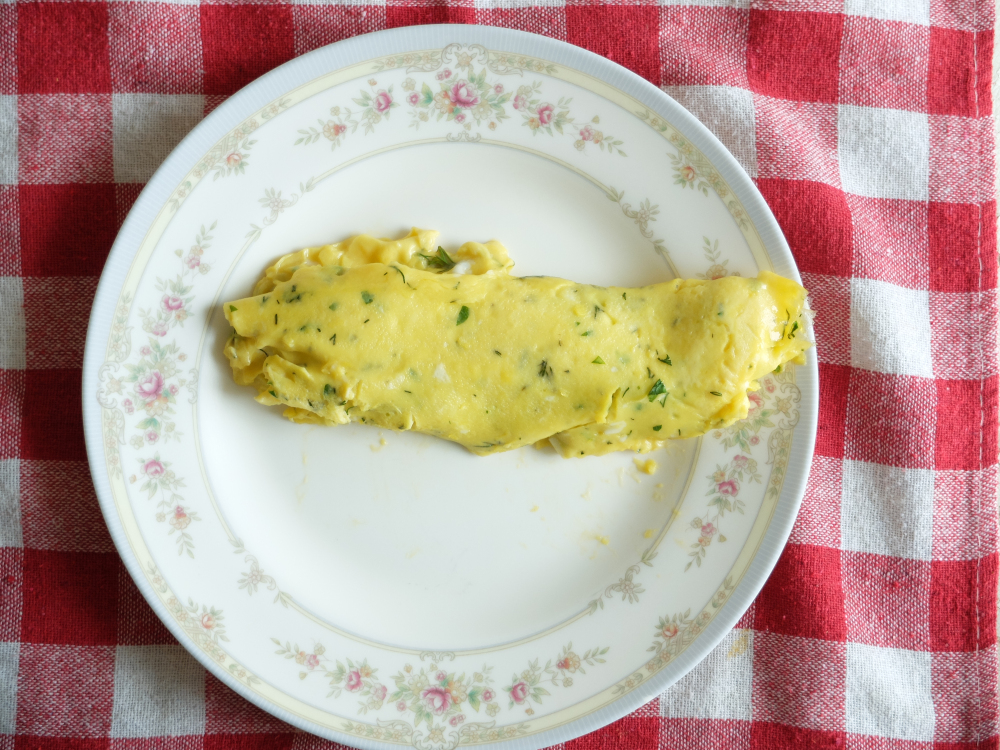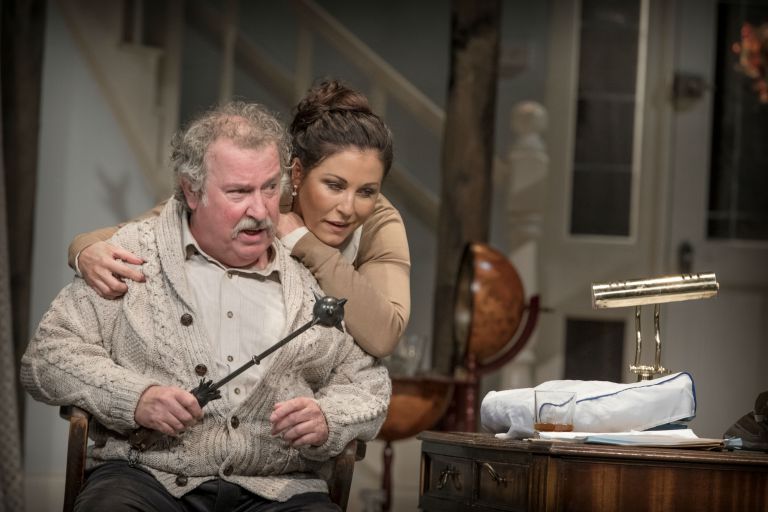The Kitchn’s Cooking School
Lesson 4
I’m veering off this lesson in the Cooking School a bit. The omelette is not part of the homework, but it’s something I’ve always wanted to master. It is the dish that French kitchens use to test a new cook after all. And many a successful chefs achieve their first perfect omelettes after having ruined dozens of eggs.
Tamar Adler writes the following in the “How to Teach an Egg to Fly” chapter in An Everlasting Meal:
“Omelets are a near relation of scrambled eggs, with less doing to them. A friend recently expressed disdain at the idea that people don’t know the difference between making one and making the other. I don’t know the difference. I make omelets and scrambled eggs the same way. I find it easiest to think of omelets as scrambled eggs I stop pushing around and add a spoonful of something wonderful to.”
Actually, that’s exactly how my family see omelette, too, come to think of it. Our version of cheese omelette is basically a few eggs pushed around a little with lots and lots of melted cheese—blue or American, but preferably blue. They were best made and eaten in the middle of the night in our kitchen in the US when we were all jetlag, wide awake, and hungry. Because this was how I was introduced to cheese omelette, I never liked cheese omelette made any other way or anywhere else. There’s just never enough cheese!
But this undertaking is still about getting back to basics. So I went all the way back to the classic French omelette.
For my first attempt, I followed Julia Child’s recipe in her book Julia’s Kitchen Wisdom. I also watched a video of her making an omelette on her show The French Chef. She made it look and sound so easy—very hot pan, pour in the egg, let it coagulate, then start jerking the pan towards you, and the eggs just fold themselves into a beautiful omelette. It did not work out that way for me. I waited till the pan was very hot. By the time I started jerking the pan towards me, the eggs wouldn’t budge. It was already too cooked. So I had to fold the egg with the rubber spatula. It ended up hard and over-cooked for a classic French omelette of course. But I fixed it with dollops of cottage cheese, a sprinkling of cayenne pepper, and a squeeze of lemon. It tasted fine, even though it wasn’t a success. You can have a look at it here on my Instagram post.
For my second attempt (featured photo), which took place this weekend, I stuck to Julia’s way, except that I didn’t let the pan get too hot and even lowered the heat to about medium high before I poured in the eggs. I waited several seconds to let the eggs coagulate. This time, when I started jerking the pan towards me, some of the eggs was still liquid, but it still wasn’t folding the way Julia’s was. I kept going, using the spatula to stir the eggs a bit and eventually to fold the omelette in little by little. The result wasn’t bad. It definitely wasn’t a pretty omelette with two pointy tips. But this time, it was creamy in the center, which is exactly what you should aim for. I drizzled olive oil on top and sprinkled on a mix of chopped Italian parsley and dill. Delicious, if I may say so myself.
My third attempt was only yesterday. I watched this video by Jacques Pépin several times before I took to the stove. And somehow I managed to screw up, or at least didn’t do as well as I thought I would. I have to admit I wasn’t particularly focused yesterday. My mind was all over the place. I found it hard to concentrate on one thing at a time. I wanted to get the omelette right and listen to a podcast and read about some thing or other all at the same time. Oh, you know, just another Monday-morning mode
This time, I went for what Julia Child called fine herbes omelette and what Jacques just calls the classic French omelette. The main difference is that you beat the fresh herbs ( in with the eggs before pouring the mixture into the pan. Jacques stabbed the yolks with his fork before beating them, too. So I did the same thing, because why not. What Jacques does differently from Julia is to stir the eggs constanly and start to fold the eggs when they’re still a little runny.
I think part of me didn’t want to depart from Julia’s technique just yet because I hadn’t yet mastered it. But Jacques’ way seemed to make more and more sense as I was making the omelette. To be clear, though, there are similarities in their techniques. But the eggs in my pan just refused to behave the way Julia’s did in The French Chef show. This time, the folding part was a bit of a mess. My confidence crumbled even further. There was this little bit that broke as I was folding, and the creamy part of the omelette began to leak out. My memory of it has become a little blurry. And since my concentration was a little off, it was hard for me to figure out what exactly went wrong.
It didn’t turn out to be a disaster. It was just that in the moment, my mind was freaking out. It’s still a far cry from being restaurant quality, but hey, it was tender and creamy in the center. And most importantly, it was tasty.

As I said in the previous post, the egg has become one of my favorite ingredients to explore and experiment with. You can be sure I’m going to get the classic French omelette right one day. And I’ll be sharing with you videos and passages from books, blogs, or websites about it along the way. I’m thinking of starting a little side project called Egg Experiment. No fixed period, just a little ongoing thing that will happen from time to time. So keep checking here on the blog and on Instagram if you’re as egg-obsessed as I am!
Share this:




